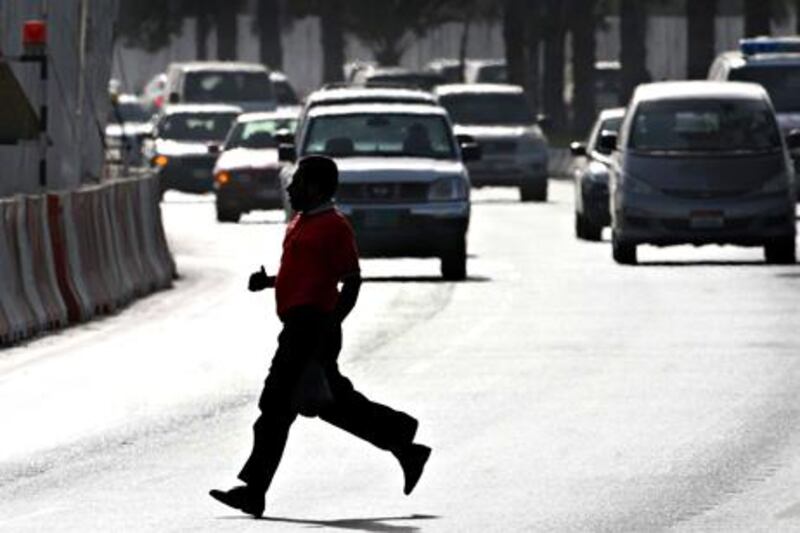ABU DHABI // If you imagine that it's getting more dangerous to be a pedestrian in Abu Dhabi, you're not wrong.
Statistics quoted yesterday at the Road Safety Middle East Summit showed that in 2009, 30 per cent of road accidents in Abu Dhabi involved pedestrians - up from 25 per cent in 2007.
And a quarter of such accidents lead to serious injuries or deaths, summit participants were told as the two-day meeting concluded.
In all, more than seven Abu Dhabi residents per 100,000 of population die as pedestrian traffic victims each year.
Mohamed Aly, a safety planning specialist in the land and transport sector at the Department of Transport (DoT), said a pedestrian safety action plan is being drawn up, in an effort to cut the number of pedestrian fatalities by 30 per cent by 2015.
One primary issue, Mr Aly said, is the amount of time pedestrians have to wait at pelican crossings before the signal indicates they can cross the street.
Other issues cited include the islands between road lanes being too narrow - sometimes less than a metre across - offering little space for pedestrians to wait.
The second goal of the action plan will be to make the emirate more walkable. A recent DoT study found that 60 per cent of pedestrians do not use designated crossings because they are inconveniently out of the way. Some 30 per cent said the crossings take too long to use.
To resolve that, the DoT is analysing accident sites to identify "black spots." The findings will be used to place new pedestrian crossings, including signalled crossings and underpasses, depending on the type of road.
Ibrahim al Hamoudi, senior transport planner at the Urban Planning Council, said a new urban environment manual would help make the city better for pedestrians, a main goal of the Abu Dhabi 2030 vision.
"Every 60 metres in the city has 400 families," he said. "Good street design is vital to the safety and quality of life for all residential areas."
Many speakers returned to the point that most traffic accidents - three quarters of them, says the Health Authority - Abu Dhabi - result from human error rather than external, uncontrollable factors. That, it was suggested, makes it essential to educate people through publicity and driver training.
A particular problem, according to a study by the Emirates Foundation for Philanthropy, is young Emiratis' attitudes, values and responses to peer pressure.
The study tried to identify the reckless driving practices adopted by young Emirati men. It found them less likely than Emirati women or Arab expatriates to stick to speed limits.
Across all groups, nearly 60 per cent of drivers took to the wheel before the legal age of 18. Almost two thirds had been involved in a car accident, and more than a quarter had been injured in an accident.
Up to a quarter of Emirati men between 18 and 33 years of age admitted dangerous driving practices including speeding, overtaking in the wrong lane and tailgating. About 16 per cent of the surveyed Emiratis said they were more likely to overtake the car in front of them if the driver were expatriate or from another emirate, a behaviour experts call "territoriality."
Tailgating was perceived as a respected behaviour among many young Emirati men. Sticking to the speed limit, keeping a safe distance, wearing seatbelts, and stopping to make mobile telephone calls were considered unmanly or cowardly - or indicative of an "unskilled driver."
Maj Awad Baloushi of the Abu Dhabi Traffic Police unveiled plans for a series of school campaigns.
The police are also planning a Dh100m Traffic Awareness City project.The 50,000 square-metre "city" will let children 5 to 17 drive miniature cars around roundabouts, across traffic signals, over flyovers and through underpasses.
* With additional reporting by Awad Mustafa
This version corrects a previous article in which we stated that 8.2 people per 100,000 died in pedestrian accidents in Dubai. In fact 8.2 people per 100,000 were total traffic deaths.






